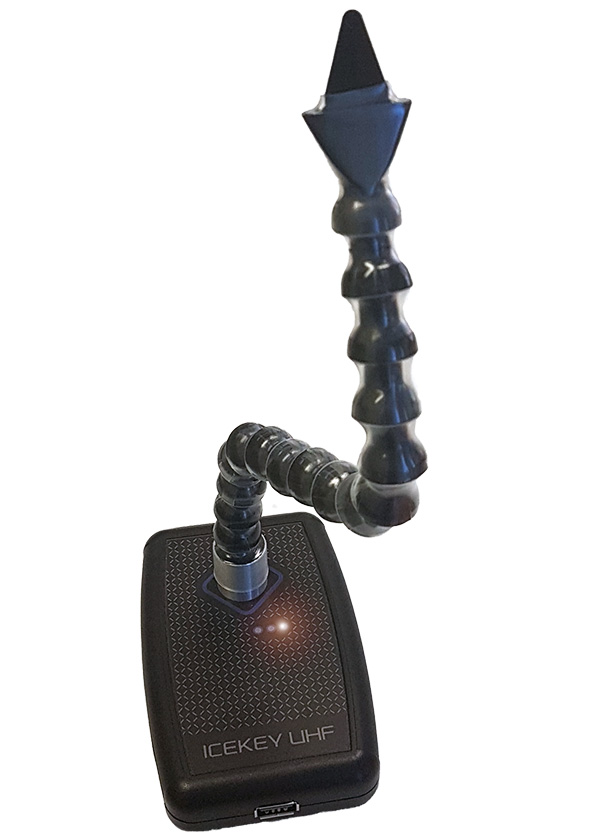IceKey UHF Snake4 is a desktop RFID reader, small in size, equipped with an antenna with a fully flexible support, able to read and write UHF tags and transmit the acquired data to any device with a USB interface.
The maximum reading distance is 2/3 mm, obtained by using the viewfinder antenna, suitable for reading small or micro tags (such as the Murata Magicstrap® tag) embedded on metal.
The use of IceKey UHF Snake4 is easy and intuitive thanks to the automatic scanning at regular intervals of time (1) and to the presence of two LEDs and a multitone beeper, to alert the operator of the reading. The fully flexible antenna support is extremely practical and functional, allowing an optimized reading of the tags.
IceKey UHF Snake4 is powered via the USB interface, the same interface used to communicate with the main desktop or portable devices equipped with the Windows, Linux and macOS operating system. Data transmission takes place in virtual serial mode, a two-way channel. A simple serial communication protocol, present on all TERTIUM Technology products, allows to manage all the RFID reader functions, in particular the ID scan and the reading / writing of the UHF tag memory (2).

